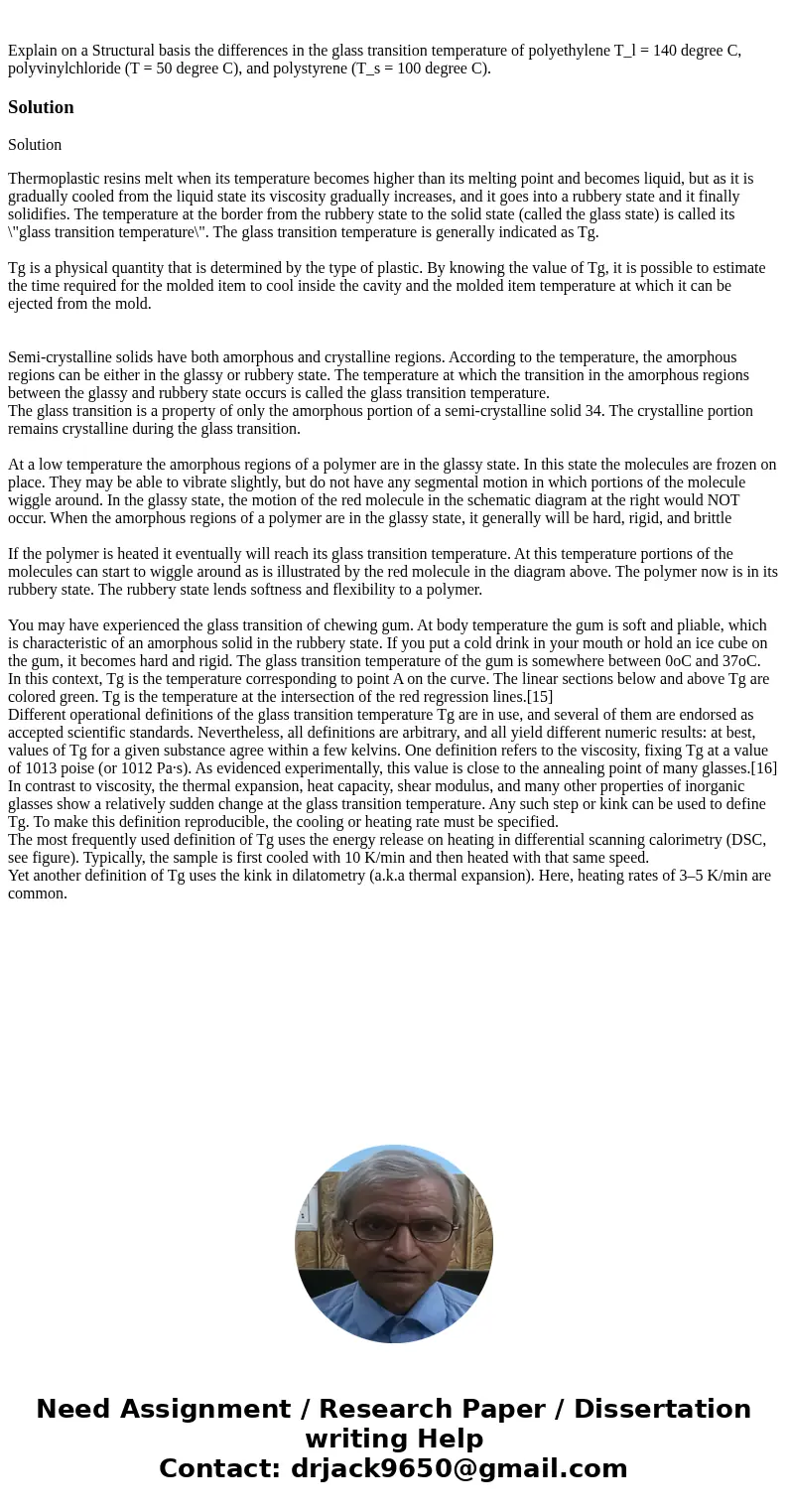Explain on a Structural basis the differences in the glass t
Solution
Solution
Thermoplastic resins melt when its temperature becomes higher than its melting point and becomes liquid, but as it is gradually cooled from the liquid state its viscosity gradually increases, and it goes into a rubbery state and it finally solidifies. The temperature at the border from the rubbery state to the solid state (called the glass state) is called its \"glass transition temperature\". The glass transition temperature is generally indicated as Tg.
Tg is a physical quantity that is determined by the type of plastic. By knowing the value of Tg, it is possible to estimate the time required for the molded item to cool inside the cavity and the molded item temperature at which it can be ejected from the mold.
Semi-crystalline solids have both amorphous and crystalline regions. According to the temperature, the amorphous regions can be either in the glassy or rubbery state. The temperature at which the transition in the amorphous regions between the glassy and rubbery state occurs is called the glass transition temperature.
The glass transition is a property of only the amorphous portion of a semi-crystalline solid 34. The crystalline portion remains crystalline during the glass transition.
At a low temperature the amorphous regions of a polymer are in the glassy state. In this state the molecules are frozen on place. They may be able to vibrate slightly, but do not have any segmental motion in which portions of the molecule wiggle around. In the glassy state, the motion of the red molecule in the schematic diagram at the right would NOT occur. When the amorphous regions of a polymer are in the glassy state, it generally will be hard, rigid, and brittle
If the polymer is heated it eventually will reach its glass transition temperature. At this temperature portions of the molecules can start to wiggle around as is illustrated by the red molecule in the diagram above. The polymer now is in its rubbery state. The rubbery state lends softness and flexibility to a polymer.
You may have experienced the glass transition of chewing gum. At body temperature the gum is soft and pliable, which is characteristic of an amorphous solid in the rubbery state. If you put a cold drink in your mouth or hold an ice cube on the gum, it becomes hard and rigid. The glass transition temperature of the gum is somewhere between 0oC and 37oC.
In this context, Tg is the temperature corresponding to point A on the curve. The linear sections below and above Tg are colored green. Tg is the temperature at the intersection of the red regression lines.[15]
Different operational definitions of the glass transition temperature Tg are in use, and several of them are endorsed as accepted scientific standards. Nevertheless, all definitions are arbitrary, and all yield different numeric results: at best, values of Tg for a given substance agree within a few kelvins. One definition refers to the viscosity, fixing Tg at a value of 1013 poise (or 1012 Pa·s). As evidenced experimentally, this value is close to the annealing point of many glasses.[16]
In contrast to viscosity, the thermal expansion, heat capacity, shear modulus, and many other properties of inorganic glasses show a relatively sudden change at the glass transition temperature. Any such step or kink can be used to define Tg. To make this definition reproducible, the cooling or heating rate must be specified.
The most frequently used definition of Tg uses the energy release on heating in differential scanning calorimetry (DSC, see figure). Typically, the sample is first cooled with 10 K/min and then heated with that same speed.
Yet another definition of Tg uses the kink in dilatometry (a.k.a thermal expansion). Here, heating rates of 3–5 K/min are common.

 Homework Sourse
Homework Sourse